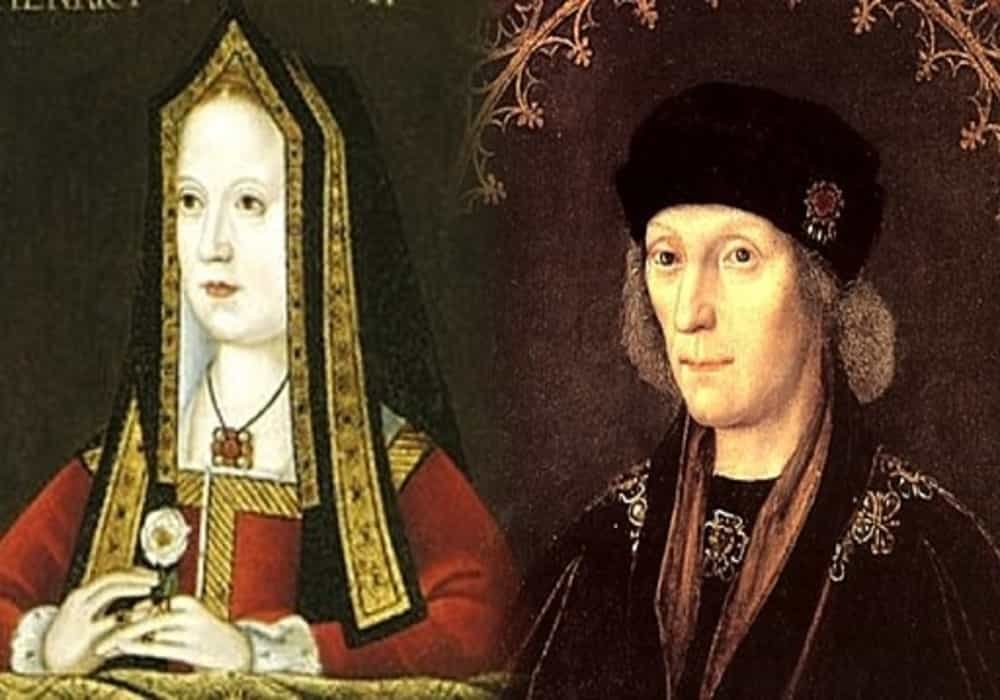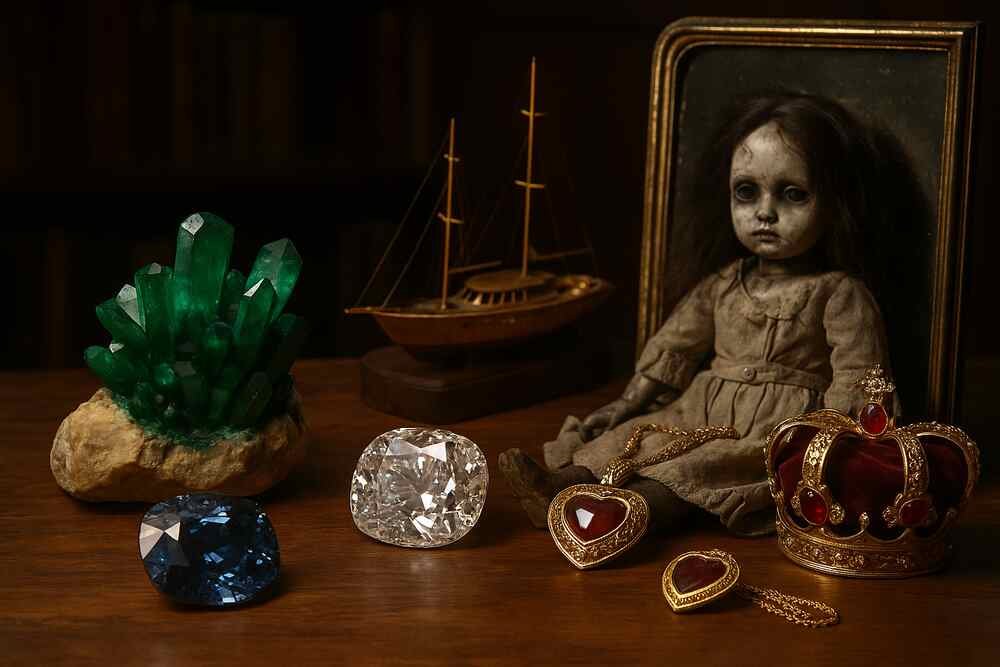Henry Tudor (Henry VII of England) 1485 – 1509
Henry Tudor (Henri VII) was born in 1457 and died in 1509. He reigned over England from 1485 to 1509. His accession to the throne ended the War of the Roses which had ravaged England since 1455, used his children’s marriages to build alliances, and signed treaties that increased England’s power. He was the founder of the Tudor dynasty which ruled England until 1603.
Henry Tudor is inseparable from his married life. Beyond their number, his weddings are remembered for the drama and the noise that surrounds their breakup.
Henry Tudor successfully ending the War of the Roses between the houses of Lancaster and York and for founding the Tudor dynasty.
Biography of Henri VII
Henry VII, born at Pembroke Castle in Wales in 1457 and died in Richmond, England in 1509, was the first ruler of the Tudor dynasty.
He is the son of Edmond Tudor, Earl of Richmond, and Margaret de Beaufort, great-granddaughter of John of Ghent (the third son of King Edward III of England).
When King Edward IV (of the House of York) took power, Henri Tudor took refuge in Brittany and became head of the Lancaster house on the death of Henry VI. By his conduct the successor of Edward IV, Richard III, arouses much indignation. Taking advantage of this fact, Henri Tudor went to Wales where he formed an army of partisans. He defeated Richard III, killed in action, at the Battle of Bosworth, in 1485. Henry Tudor was then crowned King of England under the name of Henry VII.
During much of his reign, Henry VII managed to maintain peaceful relations with Austria, Spain and France. In addition, he had to face several revolts led by impostors. Indeed, the English impostor Lambert Simnel, who claimed to be Edward, Earl of Warwick, the last pretender to the throne of the House of York, would have liked to take the place of Henry VII in power. However, the troops of the impostors were each time crushed by those of Henry VII.
War of the Roses
Civil war between 1450 and 1485 two branches of the Plantagenets claiming the crown, York (with a white rose as its emblem) and Lancaster (whose emblem was a red rose). The War of the Roses (1455-1487) was a dynastic conflict between the English nobility and monarchy that gave rise to four decades of intermittent battles, executions and plots.
The usurpation of Henry IV in 1399 was made in defiance of the rights of the Mortimer family, passed by marriage at the house of York. The triumphs of Henri V had made him forget and had conferred great prestige on the Lancastrian dynasty. The too long minority of Henri VI, his incompetence and his illness, the English impotence in the face of the French reconquest gradually destroy this prestige. In 1450, the situation was so explosive that the Duke of York, Richard, tried to exploit it for his own benefit. Hesitant between rebellion and negotiation, he took up arms on several occasions and obtained a first success by beating and killing the Lancastrian leader Edmond Beaufort, Duke of Somerset (1st battle of Saint Albans, 1455).
Read also: British Royal Family and 7 things to know about the British royal family
But, from 1459, the Lancastrians, under the impulse of the queen Marguerite of Anjou, regain their influence and prepare their revenge; in September, the Yorkists retaliated and, after several reversals of fate, their decisive victory at Towton (March 1461) gave the crown to Richard’s son, Edward IV.
But the new king falls out with his old ally, Richard Neville, Earl of Warwick. He rebels, first seeking to use the Duke of Clarence against his brother, then rallying the Lancastrian party. But he only succeeded in leading the latter to new disasters (battles of Barnet and Tewkesbury, April-May 1471).
Energetic and skilful, Edward IV knows how to be accepted; but his brother and successor, Richard III, lost the Yorkist cause by his absolutism, and, when the last Lancastrian heir, Henri Tudor, Duke of Richmond (who would reign under the name of Henry VII), landed in August 1485, Richard is abandoned by his supporters. His defeat and death at Bosworth replaced the Plantagenet dynasty with the Tudor dynasty, which would restore peace and power to England.
Marriage and descendants
In 1486, he married Elisabeth of York, eldest daughter of Edward IV, thus uniting the houses of York and Lancaster. This union also puts an end to the War of the Roses, a dynastic conflict between the Lancastrians and the Yorks. From this union are born seven children but only four will survive:
– Arthur, Prince of Wales, who in 1501 married Catherine of Aragon, daughter of Ferdinand II of Aragon and therefore aunt of Charles Quint.
– Marguerite who married Jacques IV of Scotland, then Archibald Douglas, and finally Henri Stewart.
– Marie who married the King of France, Louis XII in 1514, then remarried to Charles Brandon, Duke of Suffolk. Mary is the grandmother of Lady Jane Gray, the future Queen of England who reigned for nine days.
– Henry, the future King Henry VIII, who married in 1509 the widow of his brother Arthur, Catherine of Aragon.
Queen Elizabeth of York
Elizabeth of York is an English princess born February 11, 1466 and died February 11, 1503. Daughter of Edward IV and niece of Richard III, she married January 18, 1486 King Henry VII Tudor and became Queen of England as that wife and consort of the king. This marriage is intended to end the War of the Roses by uniting the heiress of the house of York with the heir of the house of Lancaster.
Biography
Princess of England
Elizabeth, the eldest child of King Edward IV of England and his Queen Consort Elizabeth Woodville, was born in Westminster. Although she was the first of the couple’s children, her mother already had two sons from her first marriage to Sir John Gray of Groby.
His siblings were Mary of York, Cecile of York, Edward V of England, Marguerite Plantagenêt (Princess of York), Richard of Shrewsbury, Duke of York, Anne of York, George Plantagenêt, Duke of Bedford , Catherine of York and Brigitte of York.
She was appointed Lady of the Order of the Garter in 1477, along with her mother and paternal aunt Elizabeth of York, Duchess of Suffolk. At 5, she was briefly engaged to George Neville, son of John Neville, Earl of Northumberland, support of Edward IV. Northumberland changed allegiance, however, and the promise was quashed. In 1475, she was proposed in marriage to Charles, the Dauphin of France. This plan failed because Charles’s father, Louis XI, refused.
The end of the civil war
In 1483 Edward IV died, and Elizabeth’s younger brother, Edward V, became king. His uncle Richard, Duke of Gloucester was appointed regent and protector of his nephew. Soon after his brother’s death, Richard began to isolate his nephew from his parents, Woodville. He intercepted Edward V, who was traveling from Ludlow (his Prince of Wales residence) to London to be crowned there. Edward was placed in the royal residence of the Tower of London, officially for his protection. Elizabeth Woodville then went with her youngest son, Richard, and her daughters to the sanctuary of Westminster Abbey. Gloucester asked for little Richard to keep his brother company in the Tower of London, which Elizabeth agreed to.
Two months later, on June 22, 1483, the marriage of Edward IV and Elizabeth was annulled, on the pretext that, when he had married Elizabeth, the former king was already promised to Lady Eleanor Butler. The couple’s children became bastards, and therefore unfit for succession. The Parliament enacted an act, Titulus Regius (The Royal Title), which confirmed this position: it made the children of Edward IV illegitimate, and proclaimed that Richard was the rightful king. Richard ascended to the throne on July 6, 1483, under the name Richard III of England, and Edward V and his brother died soon after. Soon the rumor of their murder spread.
Elisabeth Woodville then made an alliance with Lady Margaret Beaufort, mother of Henri Tudor, the party closest to royalty owned by the Lancastrian clan. Although Henry was the great-great-grandson of King Edward III, he could not claim the throne, because of a clause which removed from the line of succession all the descendants of John of Ghent and his mistress (who would become his third wife) Katherine Swynford. Despite this, his mother and Elizabeth Woodville decided that Henry would claim the throne, and then, when he seized it, would marry Woodville’s daughter Elizabeth, thus uniting the two rival families. In December 1483, in the cathedral of Rennes, Henri swore to marry Elisabeth, and immediately began to prepare an invasion. Meanwhile, Richard III plans to marry her to an unimportant naval officer, son of Robert Stillington. However, the promised was captured by the French off the coast of Normandy, and was imprisoned in Paris, where he died “of hunger and poverty”
In 1484 Elizabeth and her family left Westminster Abbey and returned to Richard’s court. It was rumored that Richard III, her uncle, was planning to marry her: his wife, Anne Neville, was dying and they had no children. Richard denied these rumors, and the Crowland Chronicle claims he must have done so under pressure from the Woodvilles, who feared the family would return to favor. There is no glaring evidence of Richard’s possible intention to marry Elizabeth, although Sir George Buck later claimed to have been in possession of a letter from Elizabeth stating that she was aware of these plans. , and was not opposed to it.
However, on August 7, 1485, Henry and his army landed in Wales and began their march towards London. On August 22, 1485, Elizabeth’s uncle and fiancé, betrayed by one of her captains, died in the Battle of Bosworth Field. Henry took the crown in right of conquest, under the name of Henry VII.
Queen consort of England
Henry was heir to the house of Lancaster, but genealogically this house was less important than that of Yorks. Although he knew the need to marry Elizabeth to ensure his stability, he did not want to reign as Elizabeth’s husband, but as a conqueror, and did not intend to share power with her. He nevertheless had the Titulus Regius annulled, which de facto re-legitimized the children of Edward IV, so that the legitimacy of his wife and their descendants was not===
not questioned. He chose to be crowned on October 30, 1485, without having married her yet. Not having received the papal dispensation necessary for marriage, he did not marry her immediately thereafter. Parliament then demanded that he honor his sacred vow, and that the marriage finally take place, which he did on January 18, 1486, after receiving the papal dispensation. Their first child, Arthur, was born on September 20, 1486, and Henry had Elizabeth crowned on November 25, 1487. If Henry had not asserted the right of conquest, Elizabeth would have been queen anyway, as the eldest daughter; of Edward IV, since his brothers were deceased. The marriage appeared to be successful, and the two partners appear to have felt affection for each other. Elizabeth had little political influence, due to the strong personality of her stepmother Margaret Beaufort, but she was gentle, kind, and generous to her relatives and maids, and was very motherly to her children. She loved dancing, music and dice games, she also took care of greyhounds, and seems to have enjoyed hunting and archery.
Children
Elizabeth, of renowned beauty, had seven children by Henry VII:
1. Arthur, Prince of Wales (September 20, 1486 – April 2, 1502) married Catherine of Aragon (1485-1536) in 1501.
2. Margaret, Queen Consort of Scotland (November 28, 1489 – October 18, 1541) married James IV, King of Scotland in 1503.
3. Henry, Duke of York, who would become Henry VIII (June 28, 1491 – January 28, 1547) first married in 1507 the widow of his brother Catherine of Aragon, (divorce in 1533)
4. Elisabeth Tudor (July 2, 1492 – September 14, 1495).
5. Marie, queen consort of France (March 18, 1496 – June 25, 1533) married in 1515 Louis XII of France (1462-1515) then in 1515 Charles Brandon, Duke of Suffolk,
6. Edmund, Duke of Somerset (February 21, 1499 – June 19, 1500).
7. Katherine Tudor (stillborn February 2, 1503).
Death
On November 14, 1501, Elisabeth’s eldest son, Arthur, married the Infanta of Spain, Catherine of Aragon, daughter of the Catholic kings Ferdinand II of Aragon and Isabella I of Castile, and the two adolescents were sent to live in Ludlow Castle, habitual residence of the Prince of Wales. Six months later, Catherine found herself a widow. The death of his son caused great grief to Henry VII. Elizabeth comforted him by pointing out that the king’s own mother had had no other children than him, and that God had left her a beautiful prince, two beautiful princesses, not to mention that they were both young enough (for have more children). It seems that losing her eldest son and heir to the throne, Arthur who dies shortly after his marriage to Catherine of Aragon, made Elizabeth decide to be pregnant one last time in order to ensure the succession. She died on her 37th birthday from a puerperal infection nine days after giving birth to Catherine Tudor, stillborn on February 2, 1503. Her husband seems to have genuinely mourned her. Although Henry VII left the image of a thrifty king, Elizabeth’s funeral was lavish and she was buried in Westminster Abbey where her husband would later rest by her side. Henry later considered remarrying in order to renew his alliance with Spain: Joan, Queen Dowager of Naples (the niece of Ferdinand II of Aragon), Joan, Queen of Castile (daughter of Isabella and Ferdinand) and Marguerite , Dowager Duchess of Savoy (sister-in-law of Joan of Castile) were considered parties, but Henri died a widower in 1509. He was buried near Elisabeth, where they can be found today, resting under their effigies.
Posterity (After King Henri Tudor)
His second son Henry succeeded his father as Henry VIII of England, his daughter Margaret married James IV of Scotland, and Marie married Louis XII of France. Margaret was the mother of James V of Scotland, the grandmother of Mary I of Scotland and therefore the great-grandmother of James VI of Scotland and I of England. From her are descended all the British monarchs.
Sources: PinterPandai, Britannica, The History Press, Royal Museums Greenwich
Photo credit: Max17021995 / Wikimedia Commons



